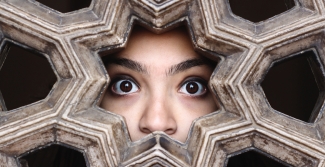Are you a Tetrachromat?
Do you carry the genetic mutation that allows you to see up to 99 million more colours than everyone else?
The average human is able to see around 1 million colours. But recent research shows there may be people who can see many more colours than usual - up to 100 million colour variations!
Neuroscientists from Newcastle University have been looking into the idea of superhuman vision. They have discovered that some people may be able to see up to 99 million more colours than the average person.
What is Trichromacy? (‘Normal’ Vision)
People who have the normal range of colour vision have trichromatic vision. Cones are cells found at the back of the eye, responsible for detecting colour. Those with trichromatic vision have three functioning cone types that detect different light colours. One cone type detects red light, one detects blue, and one detects green. People with trichromatic vision can see around 1 million different colours: combinations of red, blue, and green.
Trichromats can also have limited colour vision. Those who have three cone types, however one cone does not function fully, are known to have an anomalous trichromacy.

What is Tetrachromacy? (Superhuman Vision)
People who are tetrachromatic are believed to see around 100 million different colours. Tetrachromatics have four cone types (normally people have three). Research shows that people with tetrachromatic vision are:
- Always female.
- Carry a gene that results in colour deficiency - often have a father or son who is colour deficient.
The theory is that tetrachromats have an extra cone type as a result of a mutation. This is like the mutation that occurs in colour blindness, yet all the tetrachromat’s cone types are completely functional. This mutation happens on the X chromosome. Women inherit two X chromosomes, so if a mutation occurs, they have the potential of being a tetrachromat. As men only inherit one X chromosome, any mutations that occur would result in them having anomalous trichromacy.
Further information can be found at the vision information hub here.
How do you test for Tetrachromacy?
Research is still in progress to see if this condition exists. Because of this, there are no mainstream tests for tetrachromacy. Recent studies predict that up to 12% of women have four cone types, but very few have the capacity to see more colours. If you are a woman who has a father or son with a colour deficiency, you are more likely to be tetrachromatic. But this condition is so rare it is unlikely you will ever know you have it!
Although there is no mainstream test for tetrachromacy, it is important to ensure your eyes are healthy. We recommend that you have regular checks with your optician to verify that your eyes are healthy and that your prescription is current. If you are already a Lenstore customer, you are entitled to a free eye test with Vision Express; click here to book. With your up-to-date prescription, you can then browse our website for the best contact lenses & coloured lenses on the market.
Roshni Patel BSc (Hons) MCOptom
Optometrist and Professional Services Manager







